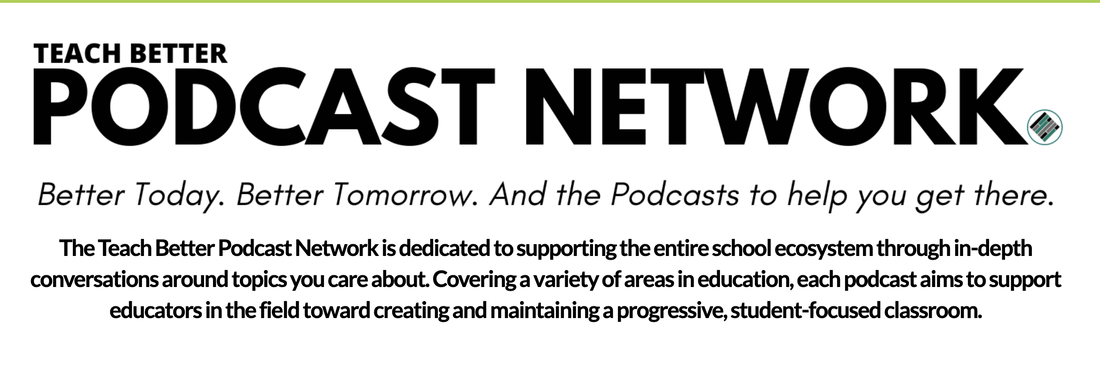
Listen to the episode by clicking the link to your preferred podcast platform below:
This episode helps you get the important things done—the things that you got into this job for. We’ll talk about what batch planning is, why I love it, how I’m using it, and how it can help you too. What is batch planning? It’s doing the work you have for a specific task that you have to repeat daily or weekly in one multi-hour chunk of time. Why? You can do the work faster. (Less task switching means saving hours of time!) You then have more time to spend on the important things (i.e., curricular and instructional leadership). Instead of this time-saving awesomeness, we often spend too much time putting out fires or playing calendar jenga. Then, we feel worse because we don’t get all the things from our never-ending to-do list done. This results in us having less energy and hope for ourselves, our colleagues, our students, and our families. This approach also makes us better at naming and upholding our priorities, which results in lots of good things—results for student learning, more efficiency and productivity at work, and more joy and wellness for ourselves. How do we make it happen? Start with a clean schedule. This approach of adding to the blank schedule is way easier to prioritize the important things rather than taking things off of your existing schedule. If you run out of time, we have to let go of the less important things. Coach and podcaster, Neill Williams encourages her clients to the question: “If I only had this much time, what would I do or prioritize?” This forced constraint of limiting how much time you have to do something—for a specific task or the total hours of your work week—forces you to prioritize and be efficient. Determine the tasks to batch. What are the 3 big tasks you repeat regularly (i.e., each week?) Coaching teachers? Engaging in professional learning for myself? Planning structures and PD opportunities for my staff? These can be tasks that require you to create something on your computer or activities that you want to be fully immersed in and not available for people to interrupt you. Schedule the batching tasks. Find a minimum of 90 minutes each day to allocate to a task that you will batch. You can schedule two batching sessions per day, but more than that may be unrealistic. Create a schedule that feels doable, but be honest with yourself and push yourself to find at least 90 minutes a day even if it seems too difficult. Then…don’t schedule over this time! Treat it like a meeting. Schedule wellness. Add “tasks” to your schedule like mental breaks, lunch, peace and quiet, and/or movement. If you’re like me, you may work through lunch to get a task done and then feel completely depleted and grumpy the rest of the day because you went 8 hours without eating anything. Put all incoming tasks in your calendar. Any tasks that come in—often, these come in via email—schedule the task in your calendar based on the estimated time it will take. I like this approach instead of adding it to a to-do list that only grows because it’s the forced constraint principle again. You only have a finite amount of time, so you need to ask yourself if it’s worth taking up space on the calendar. If not, you may decide to delegate it or you may decide it doesn’t actually need to be done at all. Final Thoughts In the last few months, I decided to reschedule all of my weekly tasks to one day per month. Instead of making one YouTube video for my YouTube channel each week, I now take one Monday per month and batch record all 4-5 videos that day. Then, I’m done with my video recording until the following month. Another great use for batching: You can coach teachers to use batching to plan more efficiently. Help your teachers break down their planning process and tasks. Then, help them use each of their planning periods for one type of task. Teachers lose so much time on switching tasks! This is also a reason to give teachers back to back planning periods whenever possible. If you’re ready to start creating your new batching schedule, grab my Batched Schedule Template. For more planning tips, you can also check out my 3-page Planner Preview for Leaders. The podcast episode on which Neill Williams was talking about forced constraints is here. And, if you’re looking for more details on the ideas in this blog post, listen to episode 108 the Time for Teachership podcast. If you’re unable to listen or you prefer to read the full episode, you can find the transcript here. Quotes:
Want to continue learning more about teaching history for justice? Watch this video on culturally responsive and sustaining education:
0 Comments
Leave a Reply. |
Details
For transcripts of episodes (and the option to search for terms in transcripts), click here!
Time for Teachership is now a proud member of the...AuthorLindsay Lyons (she/her) is an educational justice coach who works with teachers and school leaders to inspire educational innovation for racial and gender justice, design curricula grounded in student voice, and build capacity for shared leadership. Lindsay taught in NYC public schools, holds a PhD in Leadership and Change, and is the founder of the educational blog and podcast, Time for Teachership. Archives
May 2024
Categories |

 RSS Feed
RSS Feed